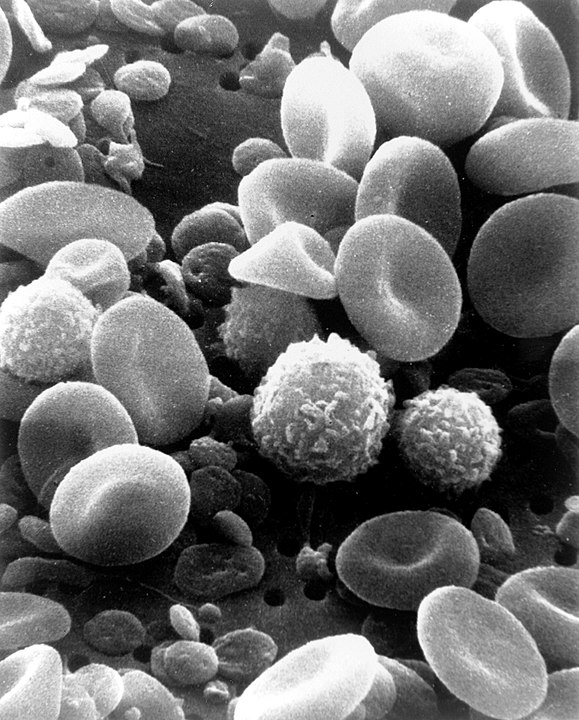
I learned this today. White blood cells kill invading bacteria, germs, and viruses in your body by eating them.
White blood cells are produced by bone marrow. They are produced by hematopoietic stem cells, and they are stored within the bone marrow or lymph tissue until they are needed. They are also called leukocytes.
When the body is invaded by an alien body, the stem cells are released to fight the invasion. Altogether, your white blood cells only make up about 1% of your blood. When they are fighting an invasion, they multiply, so testing how many white blood cells there are in the blood is a good way of knowing if the body is fighting an infection. After surgery, the hospital will keep an eye on the white blood cell count to know if there is an infection from the wound or if your body is healing.
There are different types of white blood cells, and they all have different functions. Neutrophil make up 62% of all white blood cells and they attack bacteria and fungi. When they die, they make up a large part of the pus that can come from an infection. They only live for about 8 hours and our bodies make 100 billion of them every day. Eosinophil make up 2.3% and they target larger parasites and allergic attacks. Basophil make up 0.4% and they release histamine. B-Lymphocytes (B-cells) release antibodies to turn on T-Lymphocytes (T-cells), which target viruses and tumor cells. They return the immune system to normal after an infection. They are also known as “natural killer cells”. Lymphocytes make up 30% of all white blood cells. And monocytes, which help to fight off chronic infections by attacking bacteria, make up the last 5.3%.
White blood cells constantly patrol around our bodies. They are always on the lookout for things that don’t belong in the body. In order to be able to do this, they have to know what should and what shouldn’t be in the body. The B-cells react to the foreign antigens that are on the cell walls of infected cells or of invading bacteria or parasites. When they detect a foreign antigen, they tag it with an antibody. The T-cells are unable to recognize the antigen on their own and they are ineffective without the B-cells, but they can react to the antibody. When they detect the antibody, they go into action.
The white blood cell is attracted to the antibody that the B-cell has used to mark the unwanted cell. When the white blood cell catches it, it eats it in a process called phagocytosis. The white blood cell stretches itself around the alien cell. This takes about 9 minutes.
When the foreign body is inside the white blood cell, it is killed. There are two main ways that this happens. Once the white blood cell has trapped the bacteria, its oxygen intake increases. The first method of killing requires the white blood cell to turn these oxygen molecules into a superoxide, which can then be converted into hydrogen peroxide, which kills the microbe. The second way is to release an enzyme that uses hydrogen peroxide and chlorine to create hypochlorite, which is used in domestic bleach, and this kills the microbe.
So, white blood cells are attracted to antibodies that are used to mark the foreign antigens on invading pathogens. When they catch them, they surround them and kill them with strong chemicals. And this is what I learned today.
Sources
https://askabiologist.asu.edu/t-cell
https://www.cedars-sinai.org/newsroom/research-shows-how-white-blood-cells-detect-invaders/
https://www.sciencedaily.com/releases/2011/04/110429095229.htm
https://en.wikipedia.org/wiki/White_blood_cell
https://www.medicalnewstoday.com/articles/327446#types-and-function
https://www.ncbi.nlm.nih.gov/pmc/articles/PMC4029293/
https://www2.mrc-lmb.cam.ac.uk/viruswars/viruses.php
https://www.sciencedaily.com/releases/2006/10/061002214703.htm
